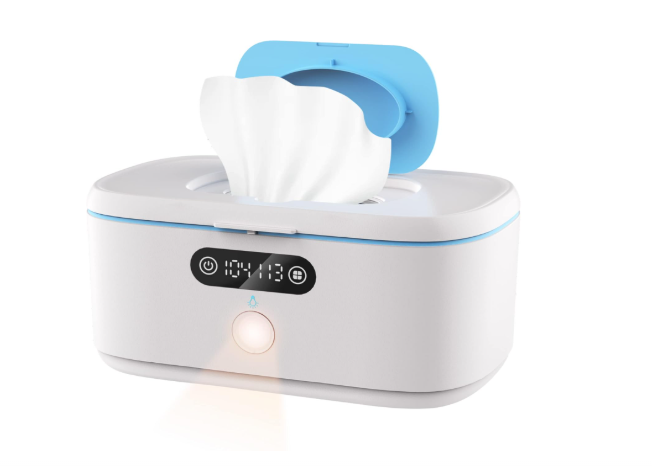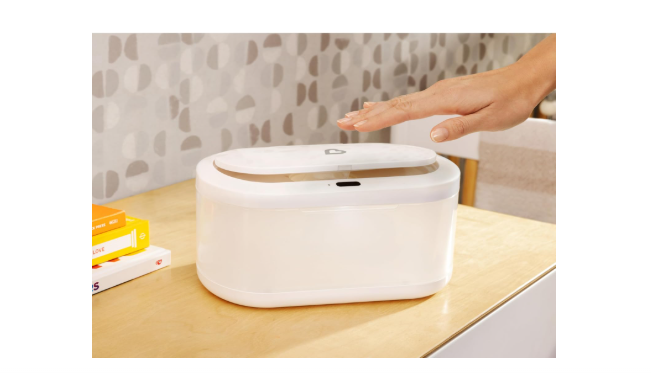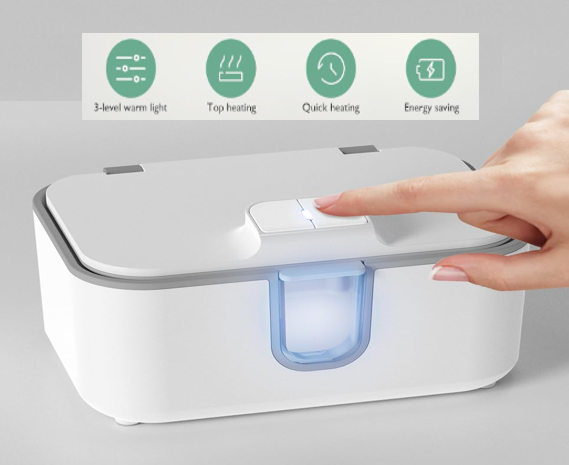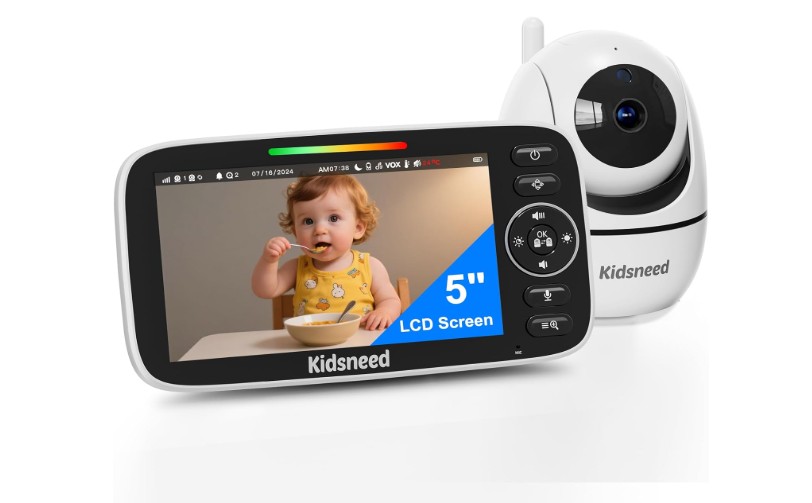When it comes to baby care, parents often want the best comfort for their little ones. One product that has gained popularity is the baby wipe warmer. These devices are designed to keep wipes at a cozy temperature, making diaper changes more soothing—especially during those cold nighttime wake-ups. But alongside convenience, parents often ask: Are baby wipe warmers safe? More specifically, what about the risk of bacterial growth?
However, leading baby wipe warmer brands are fixing this problem. Most use UV light, antimicrobial materials, and other measures to deter microorganism growth. Therefore, when buying, check whether the warmer has an antimicrobial feature. Check out some of the safest baby wipe warmers today.
In this blog, we’ll explore how wipe warmers work, the potential safety issues, the bacterial concerns you should be aware of, and tips on how to use them safely.
How Baby Wipe Warmers Work
Baby wipe warmers are simple appliances that use either a heating pad at the base or a steam system to warm the stack of wipes inside gently. Most models keep wipes slightly damp to prevent them from drying out. While this sounds convenient, the constant warmth and moisture create an environment where bacteria and mold can thrive if not handled correctly.
Understanding the Bacterial Risk
The major health concern surrounding wipe warmers is the growth of harmful microorganisms. Warmers create a “mini incubator” effect. This is because inside the warmer chamber is an environment in which most microorganisms thrive. In fact, a majority of the older models were found to have this problem.
The most common risks include:
Staphylococcus. This is a bacterium that can cause serious skin infections. A staph infection on a baby’s skin can be identified by small pus-filled lumps, which can sometimes grow larger if the infection becomes severe. It can also be seen from irregular scabs or inflamed patches.
Mold Spores. It may trigger allergic reactions or respiratory issues if transferred to your baby’s skin. They are airborne, which makes them dangerous to the baby,
Yeast Growth. Some materials used in making wipes, like viscose fabric, can provide food for the yeast to grow. Yeast growth can contribute to diaper rashes and skin irritation.
Babies have underdeveloped immune systems, making them more vulnerable to infections from contaminated wipes. That’s why hygiene and regular maintenance of the warmer are crucial.
Tips to Use Baby Wipe Warmers Safely and Avoid Bacterial Problems
Though bacterial infections are a real concern, and most current brands are fixing them, there are ways to avoid them. Here are practical steps to reduce risks:
1. Clean Regularly
Microorganisms build up in the wipe warmer with time. Therefore, by emptying and disinfecting the warmer weekly, you would significantly reduce the buildup of bacteria to levels that don’t harm the baby. However, you must use baby-safe cleaning products to prevent mold and bacteria buildup.
2. Use Fresh Wipes
Another factor contributing to bacteria growth is how frequently you refill the warmer. To be safe, don’t put a lot of wipes that will last for days. Instead of filling the container to the top, only load what you’ll use within a few days. This minimizes the time wipes spend in a warm environment, hence reducing bacterial exposure.
3. Choose Quality Warmers
Opt for models with antimicrobial interiors or steam-free heating systems. This is what the top brands in the market are doing today. The chambers of their wipe warmers are made from materials that discourage microbial growth. Most are using antimicrobial additives and UV to deter bacteria and other harmful microorganisms from growing.
4. Check for Dryness
Ensure wipes are moist but not overly wet, as excessive dampness accelerates bacterial growth. The moisture-locking design is one of the methods that wipe warmer manufacturers use to maintain a standard dryness that prevents microbes from growing.
5. Avoid Homemade Solutions
Some parents trust the DIY wipe solutions they make at home, but this may not be a good idea. These solutions may not meet the required quality standards, and they often spoil faster in a warmer. The best way to keep the baby safe with these devices is to stick with sealed, pre-moistened wipes.
6. Watch for Odors or Discoloration
The signs of bacterial or mold growth are usually the odors and the discoloration of the wipe warmer. Even if the device is said to be bacteria-safe, discard wipes and clean the warmer if you notice this.
Bottom Line
Though baby wipe warmers are increasingly becoming essential – especially during cold weather- bacteria risk remains a hot topic. The good news is that leading brands have addressed these risks by developing microbe-resistant devices. Therefore, parents can be at ease when using these wipe warmers. Check out some of the safest baby wipe warmers today.





